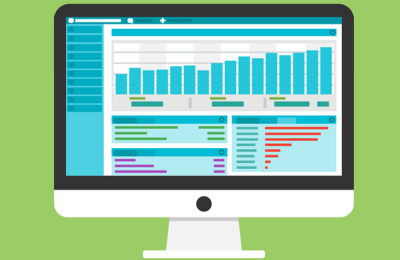The digital age has fundamentally shifted the way data is accessed and utilized, with open data playing a pivotal role in this transformation. Open data, freely accessible to anyone for use and redistribution, has become an essential resource for innovation across various industries. It has fueled technological advancements in fields like healthcare, environmental protection, and especially transportation. A prime example of open data in action is flight radar technology, which taps into publicly available sources to provide real-time flight tracking. While flight radar is widely known among aviation enthusiasts, its significance extends far beyond tracking planes—it demonstrates how open data is transforming industries such as transport, urban planning, and IT development.
The Power of Open Data in Transport
Transportation systems, especially in large cities and global networks, increasingly rely on data to improve efficiency and safety. From planning infrastructure projects to monitoring everyday operations, open data helps manage complex transportation networks. In fact, it has become a crucial factor in smart city initiatives, which use real-time data to optimize traffic flow, reduce congestion, and enhance public safety.
One of the most impressive applications of open data in transportation is in aviation, specifically through flight radar systems. These systems collect data from various sources such as ADS-B signals (which are transmitted from airplanes), radar information, and satellite feeds. By processing and aggregating this data, flight radar systems can track thousands of aircraft in real-time, providing valuable information such as flight paths, estimated times of arrival, and delays. Most importantly, much of this data is publicly available, allowing software developers, businesses, and aviation enthusiasts to leverage it in innovative ways.
For developers, this open data represents an opportunity to create advanced applications that make air travel smoother and more predictable. Apps that provide real-time updates on flight statuses, suggest optimal travel routes, or even predict potential delays based on current conditions are now commonplace. On the other hand, aviation enthusiasts use flight radars to observe flight patterns and track specific aircraft, offering insights into global air traffic that were once the preserve of air traffic controllers. The availability of open data in aviation has not only improved user experiences but also enhanced the operational efficiency of airlines and airports by optimizing schedules and routes.
Open data is not just revolutionizing air travel; it’s also transforming other forms of transport. Public transportation systems in cities like London, New York, and Singapore now rely on open data to develop real-time tracking apps for buses and trains. By giving the public access to this information, transport authorities are empowering commuters to make informed decisions and improve their daily travel experiences. Similarly, logistics companies use open data to optimize delivery routes and reduce travel times, ultimately cutting costs and improving service.
Urban Planning and Open Data

Open data has also become indispensable in urban planning, helping cities across the world grow more sustainably and efficiently. Urban planners now have access to large datasets that cover a wide array of metrics—everything from traffic flow and public transportation use to environmental indicators like air quality and energy consumption. This wealth of information enables data-driven decision-making, leading to smarter cities that better meet the needs of their residents.
Publicly accessible transport data has led to the development of tools that optimize city traffic management. For instance, some cities have implemented real-time traffic monitoring systems that use open data to predict traffic bottlenecks and adjust traffic light patterns accordingly. These systems help alleviate congestion and reduce travel times, making urban transportation more efficient. In addition to traffic management, cities are using open data to inform decisions about public transportation networks. By analyzing ridership data and transportation patterns, city planners can identify which areas would benefit from new bus routes, train lines, or bike lanes.
Another key area where open data is shaping urban planning is infrastructure development. By utilizing population data, economic activity reports, and land use statistics, planners can make better decisions about where to build new roads, bridges, schools, and hospitals. The use of open data leads to more targeted infrastructure investments that align with population growth and urban needs. For example, analyzing patterns in school enrollment data might help determine where a new school should be built, while open data on public health can guide decisions about the location of hospitals or clinics.
Environmental sustainability is a growing concern for cities worldwide, and open data is playing an important role in addressing this challenge. Many cities are now making environmental data—such as air quality measurements, carbon emissions, and water usage statistics—available to the public. Urban planners can use this data to identify areas with high pollution levels and propose strategies to mitigate them, such as adding green spaces, restricting traffic, or promoting the use of public transportation. Cities can also use energy consumption data to promote energy-efficient practices, whether it’s encouraging the use of renewable energy sources or helping residents and businesses reduce their electricity usage.
Open data also enhances citizen engagement in the planning process. By providing public access to key datasets, local governments can encourage residents to participate in urban development initiatives. People can propose solutions, contribute to planning discussions, and even develop their own applications to address urban challenges. The collaborative nature of open data thus strengthens the relationship between governments and their citizens, fostering a more inclusive approach to urban planning.
Open Data’s Influence on IT Development

The IT industry has seen a surge in innovation thanks to open data, which has become a vital resource for developers across the globe. By making data available to everyone, open data initiatives fuel creativity and the development of cutting-edge solutions in fields such as machine learning, artificial intelligence, and app development.
Open data is particularly valuable for training machine learning algorithms, which require large amounts of high-quality data to perform accurately. Many AI applications, from facial recognition systems to recommendation engines, rely on publicly available datasets for their initial training. For instance, developers working on autonomous driving systems often use open data related to traffic patterns, road infrastructure, and pedestrian movements. By integrating this data into their models, they can create algorithms that make safer, more informed driving decisions.
Open data has also given rise to the development of apps that rely on real-time information to serve users in practical ways. One such example is weather apps that use open meteorological data to provide highly localized forecasts. Another is the array of aviation apps that depend on open flight data, including real-time flight radar information, to give users updates on flight statuses, expected delays, and gate changes. These applications demonstrate how open data enables developers to build tools that enhance everyday experiences, from planning a trip to monitoring weather conditions.
In the realm of smart cities, IT developers are leveraging open data to improve city services. Whether it’s developing real-time waste management systems or improving public safety through data-driven surveillance tools, open data has become a critical resource for creating the connected cities of the future. For example, some developers are using open data on traffic accidents to develop predictive models that help cities identify high-risk areas and implement preventative measures, such as improved road signage or pedestrian crossings.
The collaborative nature of open data is also driving global partnerships in IT development. With data freely available, developers from different parts of the world can work together on shared projects, contributing their expertise to solve complex problems. Researchers and academics also benefit from open data, as they can access valuable datasets to support their studies and create innovative solutions for real-world challenges. This global collaboration has led to advancements in areas such as climate modeling, healthcare solutions, and urban sustainability.
The importance of open data in tech development cannot be overstated. Its availability has democratized innovation, allowing individuals, small startups, and large corporations alike to access the same foundational resources. This, in turn, has accelerated the pace of technological development across multiple industries, making it possible to build the tools and technologies that shape our modern world.


